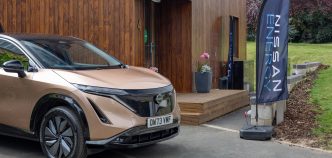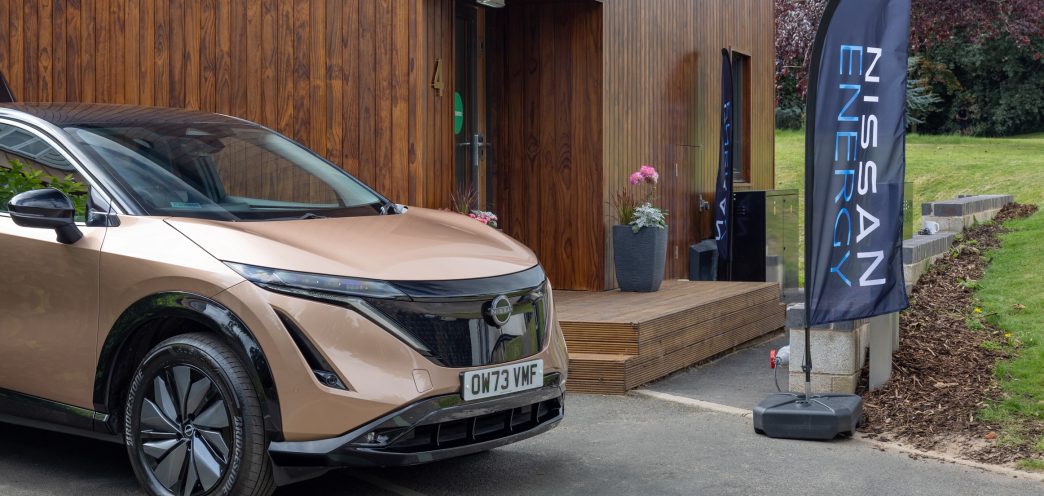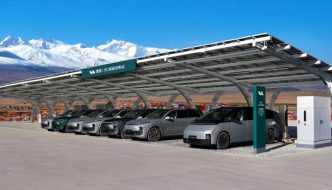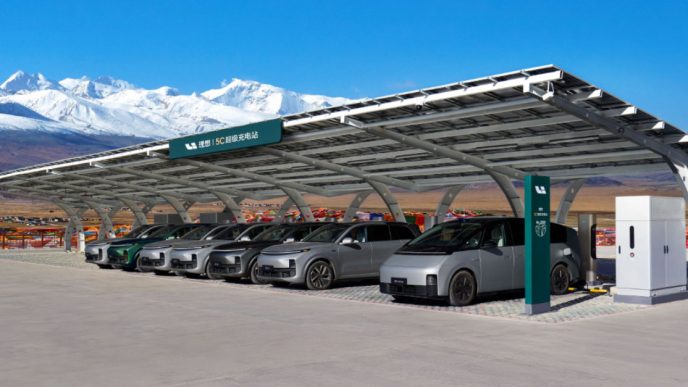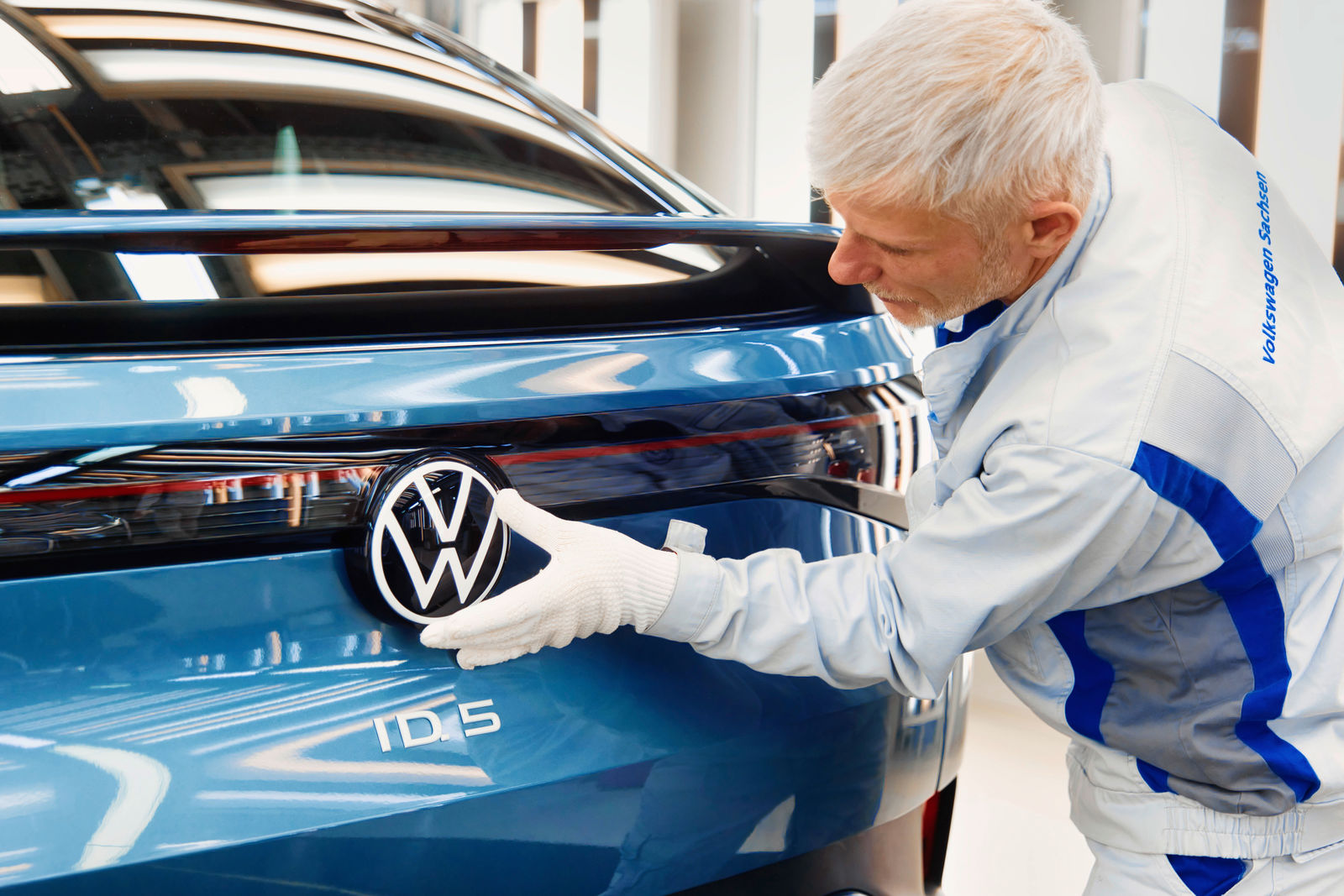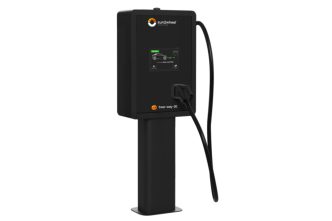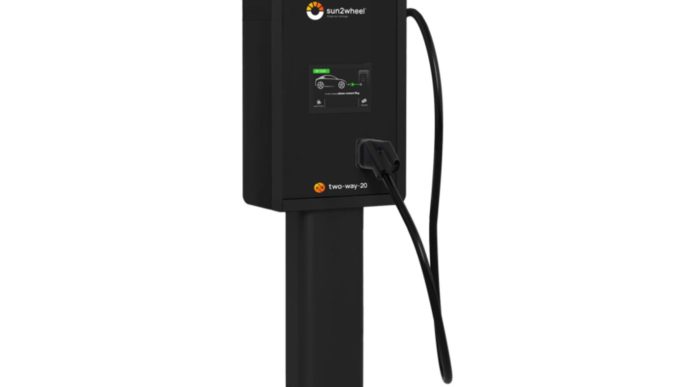The European Union could see its annual energy costs reduced by up to 8.6% by 2040 through the implementation of bidirectional electric vehicle (EV) charging, a study by Fraunhofer Institutes, commissioned by Transport & Environment (T&E), reveals.
The approach, known as vehicle-to-grid (V2G), enables EVs to store excess energy and return it to the grid, thereby stabilizing supply and potentially saving up to €22.2 billion each year.
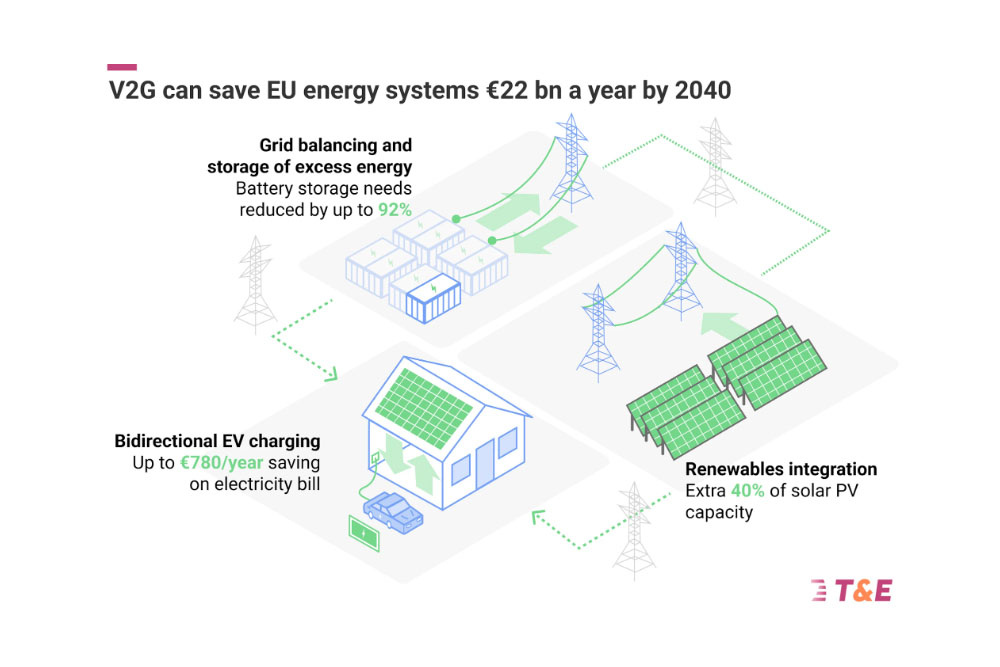
“Electric vehicles have put road transport on the path to decarbonisation, but they have more economic benefits yet to be realised,” said Fabian Sperka, vehicles policy manager at T&E. “Bidirectional charging will offer batteries on wheels for free, reducing the need to build energy storage for excess wind and solar power.”
By serving as mobile energy reserves, EVs could reduce the need for stationary battery storage by as much as 92% and contribute up to 9% of the EU’s annual power needs by 2040. The study also found that bidirectional charging could extend the life of EV batteries, despite concerns about wear. Fraunhofer researchers estimate that optimal charge and discharge levels could prolong battery lifespan by approximately 9%.
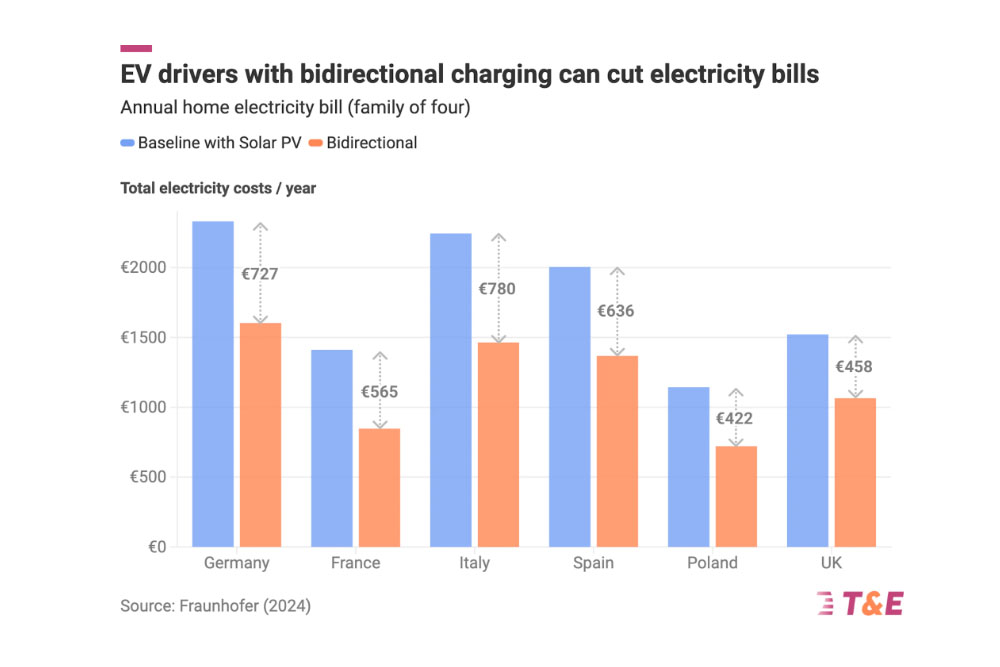
“V2G can only take off if we ensure all EVs can work with all chargers,” Sperka emphasized, urging EU policymakers to establish unified standards. “Lawmakers can unlock the potential of this technology by deciding the EU standards for bidirectional charging. That will be a win for consumers, the environment and progress towards the EU’s climate and energy goals.”
However, while V2G is technically feasible, Germany’s regulatory structure has created roadblocks, with over 900 grid operators and regulatory fees hindering adoption. In comparison, other EU countries like France and the UK are advancing quickly, supported by fewer grid operators and standardized regulations.

